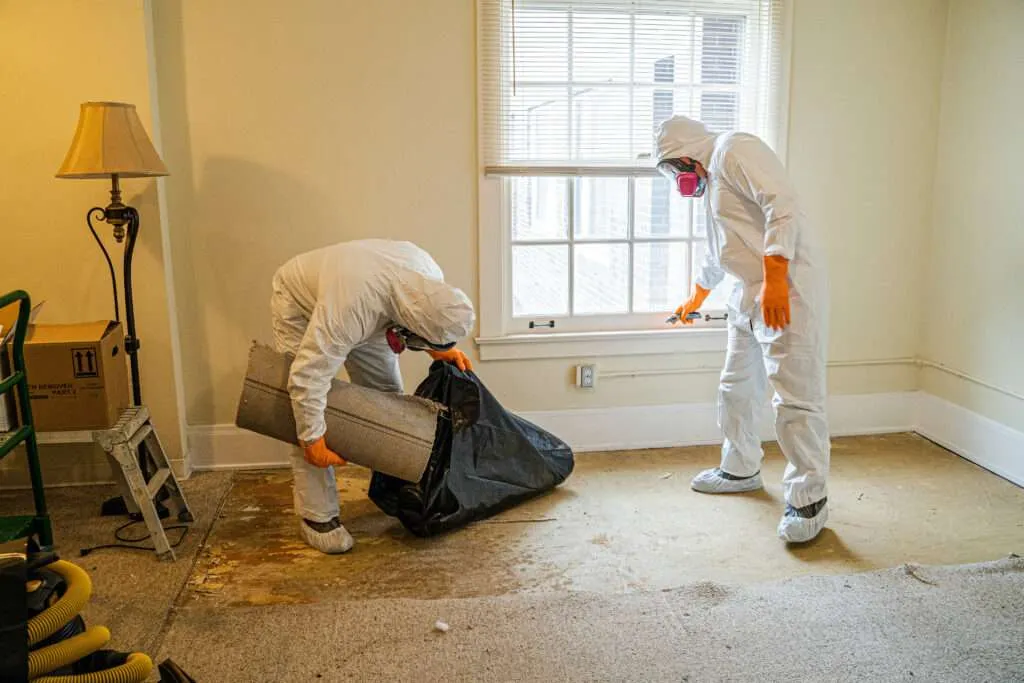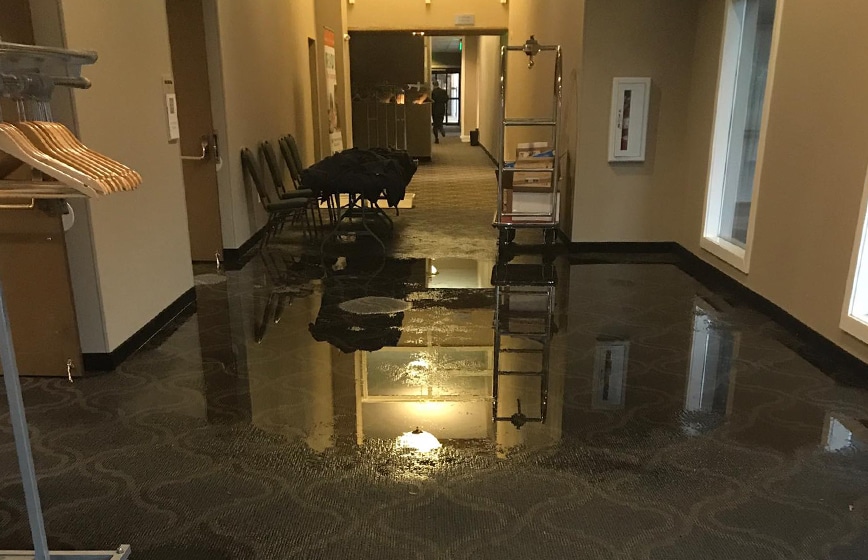Water Damage Restoration 101: Understanding the Process and Expense
Water damage can strike suddenly, leaving homeowners in a state of complication. Understanding the restoration process is necessary for effective healing. From examining the damage to picking the right company, each action impacts the total outcome and cost. Aspects such as the kind of water damage and urgency also play a significant duty. What are the specific techniques utilized in remediation, and exactly how can one get ready for possible costs?
Sorts Of Water Damage
Water damage can develop from various resources, each offering one-of-a-kind difficulties for reconstruction. The 3 primary kinds of water damage are classified based upon contamination degrees: tidy water, gray water, and black water. Tidy water stems from sources like damaged pipes or rain, posturing very little health and wellness risks. Gray water, that includes wastewater from sinks or washing devices, contains contaminants that might cause discomfort or disease if ingested. Black water, the most dangerous category, originates from sewer or floodwaters, including damaging microorganisms and virus. Each kind requires details restoration techniques and precaution to successfully address the damage and alleviate health and wellness threats. Recognizing these differences is necessary for professionals and house owners associated with the water damage reconstruction procedure.
Preliminary Evaluation and Inspection
A comprehensive initial assessment and inspection are important actions in the water damage restoration process. This phase begins with a specialist reviewing the level of the damage, identifying the resource of the water invasion, and identifying the kind of water included - Water Damage Restoration. Specialists make use of customized devices to determine moisture levels in different materials, such as walls, floors, and furnishings. In addition, they assess structural stability and prospective carcinogen, consisting of mold development. The searchings for from this evaluation educate the reconstruction strategy, directing required actions and source appropriation. Accurate documentation of the damage is crucial for insurance cases and future recommendation. On the whole, this first analysis prepares for effective restoration, guaranteeing an in-depth feedback to the details situation handy

Water Removal Methods
Following the first analysis, reliable water extraction techniques are used to mitigate damage and stop further issues. These techniques entail the usage of specialized devices such as industrial-grade vacuums and submersible pumps. The selection of approach depends on the quantity of water present and the sort of materials influenced. For standing water, completely submersible pumps are commonly made use of for quick removal, while vacuums are ideal for drawing out water from rugs and upholstery. In addition, advanced approaches like water extraction mats may be utilized for hard-to-reach locations. The objective is to get rid of as much water as feasible, lessening the potential for mold and mildew development and structural damage. Trigger and efficient water removal is necessary in the overall water damage repair procedure.
Drying Out and Dehumidification Process
When the water removal is total, the drying and dehumidification procedure becomes important to bring back the afflicted area. This stage generally employs industrial-grade dehumidifiers and air moving companies to properly minimize wetness levels. The dehumidifiers draw in damp air, getting rid of excess moisture, while air moving companies distribute air to increase dissipation. Surveillance devices is usually used to track moisture and temperature level levels, ensuring optimal drying conditions. The duration of this process can vary depending upon the level of the water damage and ecological factors. It is necessary to extensively dry all impacted products, including walls, flooring, and furnishings, to avoid mold development and structural damage. Correct execution of this step is essential for a successful remediation outcome.
Cleansing and Disinfecting Affected Areas

Initial Assessment and Examination
Before starting any kind of remediation efforts, a complete first evaluation and examination of the influenced areas are vital for effective cleaning and sterilizing. This procedure includes identifying the degree of water damage, identifying the resource of the water invasion, and reviewing the products influenced. Assessors normally search for indications of mold and mildew growth, architectural honesty issues, and harmed personal belongings. The evaluation likewise includes checking dampness degrees making use of specific equipment to guarantee no surprise water pockets continue to be, as these can cause additional difficulties. Recording the findings is crucial for preparing the next action in the reconstruction procedure. An in-depth initial analysis enables restoration specialists to design a targeted strategy for efficient cleansing and sterilizing, inevitably lessening damage and wellness threats.
Cleaning Strategies and Products
Efficient cleaning and sterilizing of water-damaged areas call for a range of techniques and items tailored to the specific materials affected. For permeable surfaces like drywall and carpeting, extraction techniques are necessary to eliminate excess dampness, adhered to by deep cleansing with specialized cleaning agents. Non-porous products such as ceramic tile or metal can be cleansed making use of commercial-grade cleansers that efficiently get rid of impurities. Heavy steam cleansing is one more reliable technique, specifically for carpetings and upholstery, as it makes use of high temperature levels to get rid of microorganisms and mold. In addition, green products are progressively popular for their safety and security and effectiveness. Eventually, selecting the appropriate cleaning techniques and products not only ensures instant tidiness however also help in stopping additional damage and wellness risks related to water intrusion.
Sanitization and Disinfection Methods
When dealing with water damage, correct sanitization and sanitation techniques are important to assure the security and health of the damaged environment. After preliminary cleansing, surface areas must be treated with appropriate disinfectants to remove microorganisms, mold, and microorganisms that grow in damp problems. Typical approaches include using EPA-approved chemical anti-bacterials, which can be applied with splashing or wiping techniques. In addition, ultraviolet (UV) light systems can successfully sanitize locations by counteracting bacteria without rough chemicals. The option of approach frequently depends upon the type of products influenced and the degree of contamination. Inevitably, detailed sanitization not just recovers a secure living room however likewise helps stop future health dangers related to lingering wetness and mold growth.

Repair Services and Restoration Options

Variables Affecting Restoration Prices
The level of water damage directly affects the remediation costs house owners can expect to incur. Factors such as the source of the water, the period of direct exposure, and the afflicted products considerably affect pricing. For circumstances, clean water damage from a busted pipeline is normally less costly to recover compared sites to damage brought on by sewer. In addition, the level of contamination determines the requirement for specialized cleansing and disposal services, further boosting expenditures. Geographic area additionally plays a duty, as regional labor prices and schedule of restoration solutions can vary. Finally, the seriousness of the response influences expenses; quicker treatments normally cause decrease total expenditures by stopping additional damage. Understanding these factors is essential for home owners when approximating repair expenses
The three key kinds of water damage are classified based on contamination levels: tidy water, grey water, and black water. A thorough first analysis and inspection are essential steps in the water damage repair process. For standing water, submersible pumps are typically made use of for rapid elimination, while vacuums are excellent for extracting water from carpetings and upholstery. The extent of water damage straight affects the restoration sets you back house owners can expect to sustain. Clean water damage from a busted pipe is generally much less costly to recover compared to damage triggered by sewage.